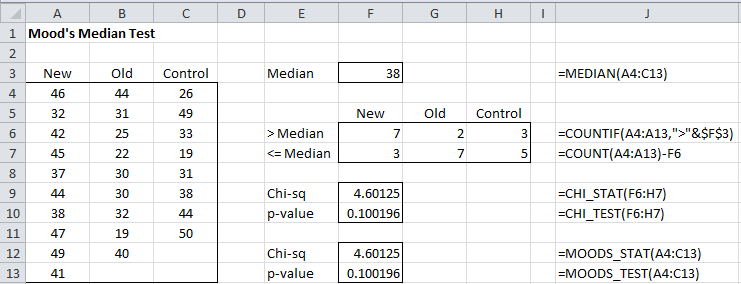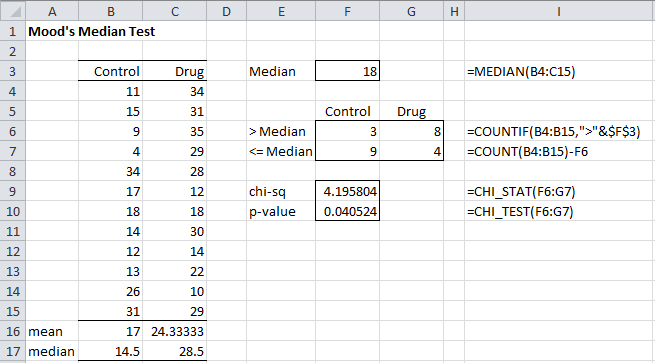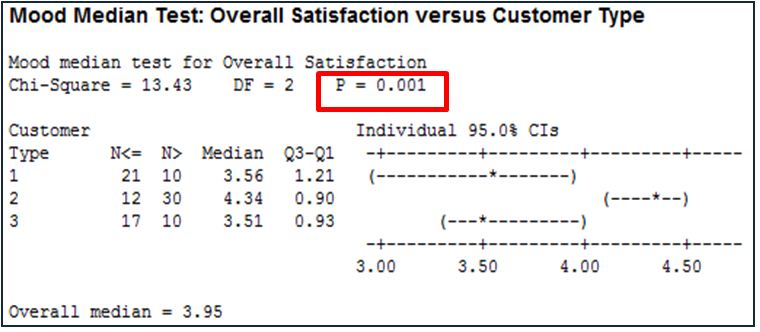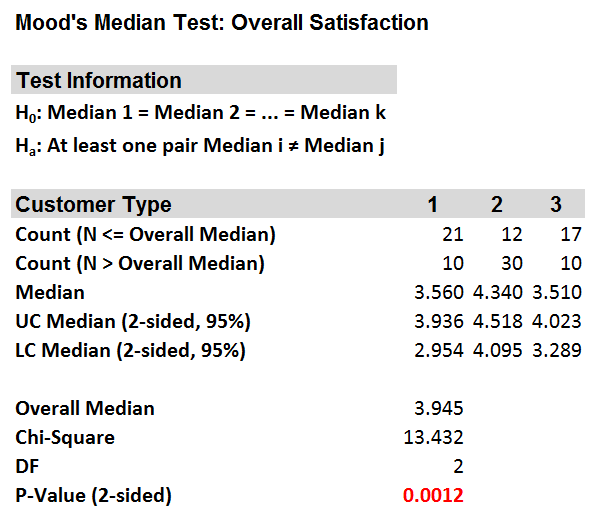Median-Test
The median test, also referred to as Mood 's median test, Westenberg - Mood median test or Brown - Mood median test is a statistical test that can be investigated whether two or more independent samples from populations with the same Median come. Because the test requires no assumptions regarding the frequency distribution of the data, it is one of the non-parametric method. The median test is very simple to perform, but is considered due to its low compared to alternative methods test strength for most applications obsolete. In general, it is Alexander McFarlane Mood attributed.
Test Description
The median test assumes independence of the values both between samples and within samples. In addition, the values must be determined by random selection from the population. The test is not bound to a certain frequency distribution of the data, the density function near the median value, and thus the shape of the distribution but should be similar between the samples.
For the implementation of the median tests of the common median of all values is determined first by combining the sample. Then the values depending on whether they are larger or smaller than the common median, each assigned to two groups within each sample are. For the treatment of values that are exactly equal to the common median, there are various possibilities. You can, if their number is compared to the total number of values are small, remain either ignored or they are respectively distributed to the groups that the result of the test is affected as little as possible. The measured distributions in the two groups in each sample are then compared in the form of a contingency table using a chi -square test.
The null hypothesis of the median test is the assumption that not distinguish between the medians of the samples. A p-value less than 0.05 is therefore to be interpreted so that at least one sample with respect to their median value is significantly different from the other samples. However, the p- value says nothing about the number of significantly different samples as well as the direction of the difference.
Alternative methods
Compared to other methods, the median test has both samples with small as well as for samples with medium to large scale low test strength.
The non-parametric method of choice instead of the median tests are for two unpaired samples the Mann-Whitney U test and for three or more unpaired samples the Kruskal -Wallis test, both in on the determination of ranking the values of the sampling and the calculation of rank sums are based. These two tests not based on the assumption of a normal distribution, but they do not just test the deviation from the median, but also take into account differences in the variance (through their ranks). So if both the assumption of normal distribution and the homogeneity assumption is violated, the median test may represent a preferable alternative (see for example Foothill & Blank Berger, 1999). For paired data are for two samples which is also based on ranks Wilcoxon signed rank test or the sign test, as well as to use three or more samples of the rank-based Friedman test. A simple to carry out non- parametric method for the rapid assessment is the rapid test of Tukey.
For large differences in the dispersion of the individual samples, the median test should be used instead of the above alternatives. Compared to these processes, the Median test beyond advantages in consideration of data outside the measurement range and other data whose value or rank is not precisely known, provided that at least one decision is possible, whether they are above or below the common median.










